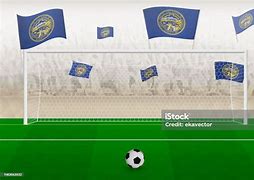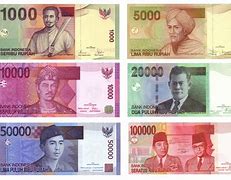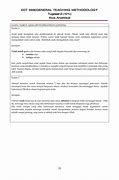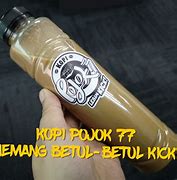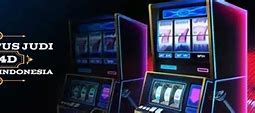
Fifth generation (C27; 2016)
2016 Nissan Serena X (C27; pre-facelift, Hong Kong)
Nissan unveiled the fifth generation Serena on 6 July 2016, and sales began in Japan on 24 August 2016. The all-new Serena received the ProPilot technology, which does lane centering. The system is designed for highway use, and will only be used in single-lane traffic as a means to keep a car between the lines of a lane on the highway. Nissan's system is operational at speeds between 30 km/h (19 mph) and 100 km/h (62 mph), and is designed to hold the vehicle in the middle of a lane by reading markers and controlling steering. Propilot can follow curves, and it automatically controls the distance between the vehicle ahead.[20]
The Serena e-Power went on sale in February 2018. It is a series hybrid with no plug-in capability powered by the HR12DE straight-three engine.
The C27 Serena debuted in Hong Kong in 2017.[citation needed]
In Malaysia, the C27 Nissan Serena S-Hybrid was launched on 14 May 2018 as a 7-seater locally assembled MPV and available in two trim levels: Highway Star and Premium Highway Star.[21]
In Singapore, an e-Power powered C27 Nissan Serena was displayed during the 2019 Singapore Motor Show.[22]
In Indonesia, the C27 Serena was launched on 19 February 2019 and is fully imported from Japan.[23]
2016 Nissan Serena X (C27; pre-facelift, Hong Kong)
2016 Nissan Serena Highway Star VIP (C27; pre-facelift, Hong Kong)
2016 Nissan Serena Highway Star VIP (C27; pre-facelift, Hong Kong)
Nissan Serena interior
The C27 Serena received a facelift in Japan on 1 August 2019 with redesigned front grille, front and rear bumpers, and omnidirectional driving support.[24][25]
In Malaysia, the facelifted C27 Serena S-Hybrid was launched on 6 July 2022.[26]
In Thailand, the facelifted C27 Serena S-Hybrid was launched on 28 November 2024.[27]
2019 Nissan Serena XV (GFC27; facelift, Japan)
2021 Nissan Serena e-Power XV Aero (GFC27; facelift, Japan)
2019 Nissan Serena e-Power Highway Star V (HFC27; facelift, Hong Kong)
Generasi ketiga Serena diperkenalkan ke pasar Jepang pada 2005, sementara di pasar lain, generasi kedua Serena masih di pasaran. Nissan dan Suzuki membuat kesepakatan untuk mengembangkan dan membangun beberapa kendaraan bersama. Di antara mereka, itu adalah Nissan Serena / Suzuki Landy Duo. Dengan kekuatan mereka dikombinasikan, hasilnya luar biasa, dan Serena berhasil menjadi MPV yang paling dijual di pasar Jepang pada 2007, 2008, dan 2009. Mobil ini dibangun dengan sistem keselamatan teratas dan interior besar, cocok untuk hingga delapan tahun. penumpang. Dari luar, lampu depan Serena menampilkan desain serupa dengan yang diinstal pada patroli Nissan. Tidak seperti banyak MPV lainnya di pasaran, ini menampilkan langkah naik di pintu belakang pintu depan. Pintu samping belakang geser membuat ruang untuk akses yang lebih mudah ke tengah dan kursi belakang. Di belakang, lampu belakang yang dipasang secara vertikal pada d-pilar-D membuat ruang untuk tailgate lebar. Di dalam, pembuat mobil memasang sepasang kursi tinggi di depan, dengan pemilih gigi yang dipasang tinggi, di tumpukan tengah. Cluster instrumen dan unit infotainment mirip dengan yang dipasang pada Nissan Primera. Tetapi sulit untuk menyembunyikan asal LCV mobil. Nissan hanya menawarkan satu opsi mesin untuk Serena, unit 2.0 liter yang disedot secara alami dipasangkan ke gearbox CVT bernama X-Tronic. Mobil itu tersedia dengan drive depan-atau all-wheel.
This is a 8-seat mid-class Nissan minivan. It provides a variety of seat arrangements that can accommodate a large amount of luggage. The interior has sufficient seating capacity to seat everybody comfortably, which makes it also perfect for long-distance trips.
2009 AT NISSAN SERENA CC25 This 2009 NISSAN SERENA with the model code CC25 is equipped with a 2,000cc Gasoline engine and has a total mileage of 71,150km. This is a Right hand drive vehicle with Automatic transmission. This vehicle has the following options installed: Airbag,Power Steering,A/C,Remote Keyless Entry,Navigation System,Power Windows,Alloy Wheels Car price of the vehicle is: US$2,798
~NISSAN SERENA - 2000cc (13.2km/リットル) ~Model 2009 ~Km 49620 (1 đời chủ) ~8Seaters ~Shaken full 2 years ~Drive recorder(ドライブレコーダー, camera hành trình)+ Back Camera ~Slisdeddors (R)automatic (cửa bên trái tự động) ~NAVI, ETC, FM, AM ~Toal 418000 yen (Casd) + ship +{自動車税, car tax, Thuế xe ô tô (người sở hữu xe phải trả)} ***Khi mua xe công ty LE MOTOR quý khách được sử dụng dịch vụ tốt nhất, ít phải sửa chữa vặt, các thiết bị phụ tùng thay thế định kỳ đã được kiểm tra và thay mới trước khi giao xe cho khách, chế độ bảo hành luôn làm hài lòng khách hàng (bảo hành tới 3000km sau khi mua xe)***
The Nissan Serena (Japanese: 日産・セレナ, Hepburn: Nissan Serena) is a minivan manufactured by Nissan, joining the slightly larger Vanette. The car was engineered by Nissan's Aichi Manufacturing Division and launched in 1991 as a compact passenger van, and it grew larger with each generation over the years. Earlier versions were front-engine, rear-wheel-drive layout with a live axle mounted on leaf springs, while the following generations are front-wheel drive or 4WD.
The Serena is designed to comply with Japanese vehicle class, which means its external dimensions are restricted to 4.7 meters in length and 1.7 meters in width. It slots below the larger Nissan Elgrand in Japan as a smaller, cheaper alternative. Competitors include the Toyota Noah, the Honda Stepwgn, the Mitsubishi Delica, and formerly, the Mazda Biante.
Its name is from the Latin word "serēnus", meaning "clear, tranquil, pleasant".
The Serena was rebadged and marketed by Suzuki as the Suzuki Landy (Japanese: スズキ・ランディ, Hepburn: Suzuki Randi) between 2007 and 2022.[1] The Serena based Landy was discontinued and replaced by an all-new version that is now based on the Toyota Noah starting in 2022, when the fourth generation Noah was released.
Like the larger Elgrand, a tuned, modified version of the Serena is available by Autech.
Second generation (C24; 1999)
The second-generation Serena was launched in Japan in June 1999, ditched the rear-wheel drive layout in favour of front-wheel drive construction. These versions had a facelift with a wider variety of engines and colours. From December 2001 onwards (the time of the facelift) the Serena used the QR20DE and QR25DE. The pre-facelift C24 Serenas all have a 2.0 L engine, with the optional 2.5 L engine becoming available from 2002. With the partnership between Nissan and Renault having been implemented, Nissan MPVs were withdrawn from Europe where Renault products, like the Renault Espace and Renault Scénic were sold and better accepted.
Indonesian-market cars use the 2.0 L QR20DE inline-four petrol engine. The trims available in Indonesia are Comfort Touring, Highway Star, and Autech. The Comfort Touring trim-level does not come equipped with electric sliding door and reverse camera, while the Highway Star and the Autech do.[4] The C24 Serena was also manufactured by Edaran Tan Chong Motor Sdn Bhd in Kuala Lumpur, Malaysia.[5]
Japanese-market Serena pre-facelift rear
Japanese-market Serena post-facelift
Japanese-market Serena post-facelift rear
Japanese-market Serena High Roof post-facelift rear
Japanese-market Serena Rider pre-facelift
Japanese-market Serena Rider pre-facelift rear
Japanese-market Serena Rider post-facelift
Japanese-market Serena Rider post-facelift rear
In Taiwan, a lengthened version of the Serena C24 has been manufactured by Yulon under the Nissan label. The Taiwanese Serena is 141 mm (5.6 in) longer than the original, all behind the C-pillar. The Taiwanese version was in production until 2012 and only available with the 160 PS (118 kW) 2.5-liter QR25DE engine joined to a 5-speed manual or 4-speed automatic.[6]
Taiwanese-market Serena pre-facelift
Taiwanese-market Serena pre-facelift
Taiwanese-market Serena post-facelift
Taiwanese-market Serena post-facelift
In the People's Republic of China, the Serena Mk. II was sold by Zhengzhou Nissan Automobile in the form of the Taiwanese Yulon version while being rebadged to Yuxuan or Yumsun under the Dongfeng brand.
Dongfeng Yuxuan (Yumsun)
Another restyled, rebadged, and renamed version called the Dongfeng Succe and is also produced by their subsidiary Zhengzhou Nissan Automobile.[7]
Dongfeng Succe pre-facelift
2012 Dongfeng ZNA Succe 1.6 pre-facelift
Chinese-market Dongfeng Succe post-facelift
Chinese-market Dongfeng Succe post-facelift
Fourth generation (C26; 2010)
The 2011 Nissan Serena was released in late November 2010 to the Japanese market, equipped with a new 2.0-litre MR20DD direct injection inline-four gasoline engine.[10] This model was sold in Japan, Hong Kong, Malaysia and Indonesia.[11]
In August 2012, Nissan added their newly developed simple hybrid system called Smart Simple Hybrid or S-HYBRID. The Nissan Serena C26 S-HYBRID has its regeneration capacity and output power of the Eco Motor, which is an alternator that is used for Nissan's Serena having an idling stop mechanism and capable of restarting an engine, upgraded. Nissan added a lead sub-battery in the engine room for extended energy regeneration capacity.[citation needed] The Serena has a fuel economy of 15.2 km/L (approx 35.8 mpg) under the JC08 test mode.[12]
In Indonesia, the C26 Serena was locally assembled and went on sale in January 2013. The Autech version of the Highway Star trim was added in September 2013. The facelift version of the C26 Serena was launched on 13 March 2015.
In Malaysia, Tan Chong launched Nissan Serena S-Hybrid in July 2013 being fully imported from Japan and only available in one trim level: Highway Star.[13][14] In November 2014, the facelift version was launched, being locally assembled in Malaysia and available in two trim levels: Highway Star and Premium Highway Star.[15][16] In July 2016, Impul versions were made available.[17]
Nissan Serena C26 pre-facelift rear
Nissan Serena Highway Star pre-facelift
Nissan Serena Highway Star pre-facelift rear
Nissan Serena S-Hybrid post-facelift
Nissan Serena S-Hybrid post-facelift rear
Nissan Serena Highway Star S-Hybrid post-facelift
Suzuki Landy pre-facelift
Nissan Serena interior
Nissan Serena Fuel tank capacity
The model Nissan Serena is produced by Nissan between 1992 and 2000. They were produced 10 versions in total.The body type is MPV. The engine's fuel type is Petrol, Diesel with transmission Manual and power 97 hp, 126 hp, 75 hp.The Fuel tank capacity is 60 l. The top speed is 155 km/h, 170 km/h, 135 km/h, 150 km/h.Nissan Serena Fuel tank capacity vary according to year of production, body type, fuel type, transmission or power. Nissan Serena fuel tank capacity list.
First generation (C23; 1991)
Nissan Serena 2.0 FX (pre-facelift, Japan)
Models were manufactured in Japan from 1991 onwards, and many were imported into Australasia and the United Kingdom. Nissan produced many different trim levels - FX, SX etc. Full-Auto (full-time) 4WD versions were also produced providing greater stability and better handling. The naturally aspirated 2.3 L diesel was never manufactured for the Japanese market and its seating arrangement and interior fittings are not the same as the 2.0 L petrol (SR20DE), 2.0 L diesel CD20 and turbo-diesel CD20T models manufactured in Japan for the local market. It was exclusive to Japanese Nissan dealerships called Nissan Bluebird Store.
Throughout its production the C23 model underwent several facelifts although the interior design and body largely remained unchanged, for example, addition of airbags and bench seats for the second and third rows. Each facelift model can be identified by front grille design which was updated in 1994 and 1997.
In European markets, the C23 Serena had 1.6 or 2.0 L petrols, or 2.3 L diesel engines LD23. Trim levels were LX, SLX, SGX and SGXi. Auto Express once named the Serena as the slowest passenger car in the benchmark 0-60 mph (now 62 mph) test, with the 2.3 L diesel version (added in the mid 1990s) taking 27.8 seconds to reach that speed.
Until around 2002, the standard petrol engine was an SR20DE. A variety of other engines were used over the years, including diesels specifically the CD20 (for the commercial van version), CD20T 1,973 cc Diesel Turbo, and the CD20ET.
Nissan Serena Cargo VX (Japan)
Nissan Serena 1.6i FGX (first facelift, Indonesia)
Nissan Serena (first facelift, Indonesia)
Nissan Serena (first facelift, Indonesia)
Nissan Serena Highway Star (second facelift, Japan)
Nissan Serena Highway Star (second facelift, Japan)
The Nissan Vanette was a series of small vans manufactured in Spain by Nissan alongside the European market Serena models. The van was produced in two versions, the Vanette E, which shared the basic body shell with the Nissan Serena people carrier, differing only in not having rear windows and passenger seats, and the Vanette Cargo, which was longer and had a higher roof line from behind the front seats.
In June 1998, LDV Group entered into an agreement with Nissan to sell a rebranded version of the Vanette Cargo.[2] This was named the LDV Cub and was sold alongside the Vanette in Britain. The model was discontinued in 2001 and replaced by a rebadged version of the Renault Trafic called the Nissan Primastar, which is produced in Luton, England and Barcelona, Spain.
Nissan Serena (facelift, Germany)
Nissan Serena (facelift, Germany)
Nissan Vanette Cargo (pre-facelift)
Nissan Vanette Cargo (pre-facelift)
Nissan Vanette E (facelift)
The Nissan Serena Mk1 is said to have an image problem by some, in particular Fifth Gear presenter Quentin Willson, who remarked in a 1997 Top Gear episode that "...the Nissan Serena was about as seductive as a skip and as desirable as an old shoe."
By 2000, the Nissan Serena was described as the worst new car sale on Britain, by Top Gear's Buyers Guide, with "absolutely nothing to recommend it for".
Although the Nissan Serena handles better than most people expect it to (due to its mid-mounted engine), its power-to-weight ratio is particularly poor, as shown by the 0–100 km/h averages listed below. For those wanting performance cars, the only models with marginally acceptable acceleration are powered by the SR20DE engine, but all models are acceptable for the target family-car user, as shown by sales figures.
Largo was the model name used for a Nissan passenger van based on the C23 Serena between 1992 and 1998. Unlike the previous Largo, which was essentially a widened C22 Nissan Vanette, the W30 Largo was a totally rebodied, wider Serena with more equipment such as four-wheel-drive. It was exclusive to Nissan Satio Store locations as a large load carrying vehicle next to the Sunny. The Largo was available with either a 2.4-litre petrol or a 2.0-litre turbo-diesel, both mid engined (under the front seats).
W30 Nissan Largo (pre-facelift)
W30 Nissan Largo SX-G Plus (facelift)
W30 Nissan Largo (facelift)
W30 Nissan Largo Highway Star (facelift)
W30 Nissan Largo Highway Star Touring
W30 Nissan Largo Highway Star Touring
Third generation (C25; 2005)
The third generation debuted in Japan in May 2005.[8] This model was officially sold in Japan and Hong Kong, and also sold through parallel imports in Singapore, Indonesia and Brunei.
In 2007, 2008 and 2009, the Serena C25 was the best selling minivan in Japan.
This model was also sold as the Suzuki Landy in Japan, a practice that is continued with the fourth and fifth generation Serena.
The third generation was discontinued in Japan in late 2010 and in Hong Kong in 2011.
Nissan Serena C25 pre-facelift rear
Nissan Serena C25 20RS/RX pre-facelift
Nissan Serena C25 Highway Star pre-facelift
Nissan Serena C25 post-facelift
Nissan Serena C25 post-facelift rear
Nissan Serena C25 Highway Star post-facelift
Nissan Serena C25 Highway Star post-facelift rear
Suzuki Landy pre-facelift
Suzuki Landy post-facelift
Nissan Serena interior
Sixth generation (C28; 2022)
2022 Nissan Serena e-Power XV (GC28, Japan)
The sixth-generation Serena was unveiled on 28 November 2022.[30]
2022 Nissan Serena e-Power XV (GC28, Japan)
2022 Nissan Serena e-Power Luxion (GFC28, Japan)
2022 Nissan Serena e-Power Autech (GFC28, Japan)
For the Japanese market, it is available in X, XV, Highway Star V and Luxion grade levels. The first three grades are available with either petrol or e-Power and have 7-and 8-seater capacity, while the latter is only offered with e-Power and has 7-seater capacity.[31] Since September 2024, optional “e-4ORCE” four-wheel-drive option became available for the e-Power X, XV and Highway Star V grades.
The sixth generation Serena was launched in Singapore on 13 May 2024. It is only offered with e-Power petrol hybrid, with either Premium 8-seater variant and Highway Star Prestige 7-seater variants.[32]
The sixth-generation Serena went on sale in Indonesia on July 2024 at the 31th Gaikindo Indonesia International Auto Show,[33] after being first previewed by the Japanese market Luxion model that was showcased in August 2023 at the previous year's GIIAS.[34] For the sixth-generation, the Indonesian market Serena is only available with the e-Power series hybrid powertrain. The vehicle is offered with a single variant returning from the previous generation: Highway Star.[35]
Nissan Serena won Technology Award at 2023-2024 Japan car of the year. Nissan has announced that the Serena minivan has been awarded the Technology Car of the Year at the 2023-2024 Japan Car of the Year awards.[36]
【2022年12月フルモデルチェンジ】日産セレナC28型の外装・内装の情報
This is a 8-seat mid-class Nissan minivan. It provides a variety of seat arrangements that can accommodate a large amount of luggage. The interior has sufficient seating capacity to seat everybody comfortably, which makes it also perfect for long-distance trips.
2008 AT NISSAN SERENA CC25 This 2008 NISSAN SERENA with the model code CC25 is equipped with a 2,000cc Gasoline engine and has a total mileage of 155,037km. This is a Automatic transmission. This vehicle has the following options installed: Airbag,A/C,Navigation System,Alloy Wheels Car price of the vehicle is: US$1,764
Generasi ketiga Serena diperkenalkan ke pasar Jepang pada 2005, sementara di pasar lain, generasi kedua Serena masih di pasaran. Nissan dan Suzuki membuat kesepakatan untuk mengembangkan dan membangun beberapa kendaraan bersama. Di antara mereka, itu adalah Nissan Serena / Suzuki Landy Duo. Dengan kekuatan mereka dikombinasikan, hasilnya luar biasa, dan Serena berhasil menjadi MPV yang paling dijual di pasar Jepang pada 2007, 2008, dan 2009. Mobil ini dibangun dengan sistem keselamatan teratas dan interior besar, cocok untuk hingga delapan tahun. penumpang. Dari luar, lampu depan Serena menampilkan desain serupa dengan yang diinstal pada patroli Nissan. Tidak seperti banyak MPV lainnya di pasaran, ini menampilkan langkah naik di pintu belakang pintu depan. Pintu samping belakang geser membuat ruang untuk akses yang lebih mudah ke tengah dan kursi belakang. Di belakang, lampu belakang yang dipasang secara vertikal pada d-pilar-D membuat ruang untuk tailgate lebar. Di dalam, pembuat mobil memasang sepasang kursi tinggi di depan, dengan pemilih gigi yang dipasang tinggi, di tumpukan tengah. Cluster instrumen dan unit infotainment mirip dengan yang dipasang pada Nissan Primera. Tetapi sulit untuk menyembunyikan asal LCV mobil. Nissan hanya menawarkan satu opsi mesin untuk Serena, unit 2.0 liter yang disedot secara alami dipasangkan ke gearbox CVT bernama X-Tronic. Mobil itu tersedia dengan drive depan-atau all-wheel.
Nissan Serena Fuel tank capacity The model Nissan Serena is produced by Nissan between 1992 and 2000. They were produced 10 versions in total.The body type is MPV. The engine's fuel type is Petrol, Diesel with transmission Manual and power 97 hp, 126 hp, 75 hp.The Fuel tank capacity is 60 l. The top speed is 155 km/h, 170 km/h, 135 km/h, 150 km/h.Nissan Serena Fuel tank capacity vary according to year of production, body type, fuel type, transmission or power. Nissan Serena fuel tank capacity list.








